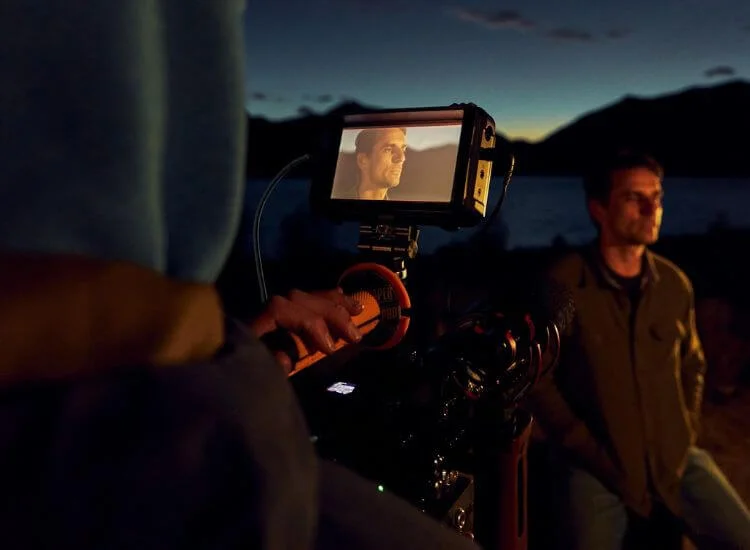



Great video content leaves a clear impression because it tells a story that feels real and engaging. Strong narrative elements help viewers connect with a message faster than plain visuals or dialogue. As more creators use video to communicate ideas, mastering creative video storytelling makes your message more memorable and gives your content a stronger emotional impact.
These video storytelling techniques help shape your message, guide your viewers, and give your content a sense of direction that resonates from the first scene to the last. When your story feels intentional and well structured, your audience stays focused on the moments that matter most.
Video storytelling techniques refer to the methods used to shape a message into a story that feels smooth and meaningful. These methods include structure, pacing, visual choices, sound, and emotional cues. They turn raw footage into content with purpose, helping viewers follow the narrative with ease. Video storytelling employs clear plot points, character-driven moments, and visual storytelling techniques to create videos that are both memorable and easy to understand.

A strong story gives your video direction and helps your message stand out. Viewers feel more connected when content reflects their interests, challenges, or goals. When your narrative highlights relatable situations, your audience sees themselves in the story, which builds a natural emotional link.
Clear storytelling also improves the overall viewing experience by guiding people from one idea to the next without friction. A consistent narrative boosts engagement, keeps attention on your key points, and increases watch time across different platforms. Videos with solid storytelling tend to build more trust because the message feels organized, purposeful, and easy to follow.
For creators who are still learning the foundations of production, exploring the basics of video creation can strengthen the storytelling process and improve confidence on camera.
Your opening moments matter. The first few seconds set the tone and tell viewers what to expect. A strong hook might show a striking visual, a clear problem, or an interesting moment that grabs attention. Good hooks help viewers stay with you long enough to understand the purpose of your video.
A simple and familiar structure helps your story flow. Many creators use the three act structure.
This structure makes storytelling more predictable in a positive way, giving viewers a clear path to follow. If you want to organize your scenes visually, you can check the guide, How to Make a Storyboard to support a smoother narrative plan.
Knowing your audience is one of the most effective ways to strengthen your storytelling. The more you understand their motivations, preferences, and challenges, the easier it becomes to create content that resonates. This insight shapes the tone, pacing, and visual style you choose.
Audience knowledge also improves your message clarity because you focus on what matters most to them. When your content aligns with their needs, viewers stay engaged and feel supported by the story you tell. This connection helps build trust and encourages people to return for more of your content.

Visual storytelling techniques guide how your audience interprets each scene. Camera angles, lighting, color choices, and composition influence emotional tone and help highlight important moments. When these visual elements work together, the story becomes easier to follow without relying on heavy narration.
Close-up shots show emotion and make character reactions more impactful. Wide shots provide context and help viewers understand the environment or situation. Intentional visual design keeps your message clear and enhances the meaning behind each action.
Sound design shapes the mood of your video and supports the emotional direction of your story. Music sets the pace, sound effects highlight key actions, and ambient audio helps create a sense of space. When your sound choices match your narrative, your video feels more polished and engaging.
Thoughtful use of silence can add tension or reflection during important moments. Consistent audio levels also make your content easier to watch and reduce distractions. With strong sound design, your story becomes more immersive and memorable for viewers.
Pacing controls the rhythm of your story and determines how quickly your audience absorbs information. Smooth transitions and balanced timing help keep attention on key moments. When your pacing supports the emotional flow of your message, your story feels natural and steady.
Editing shapes the viewer’s experience by combining scenes in a way that guides their understanding. Short cuts bring energy and focus, while longer shots slow things down and create space for reflection. Well-planned editing keeps your audience engaged throughout the entire video.
You can explore popular video editing effects to enhance transitions, refine visual flow, and strengthen the overall rhythm of your storytelling.
When your story includes spoken lines, a teleprompter app can help you keep a steady and confident delivery. It ensures you follow the script with accuracy and maintain strong eye contact with the camera. This creates a natural and trustworthy presentation style.
A teleprompter also helps you stay focused on the story instead of worrying about missed lines or pauses. Teleprompter.com supports creators who want clear narration and smooth storytelling in every scene.
Animation adds variety to your content and helps explain ideas that might feel complex through live action alone. It simplifies concepts and creates visual clarity for step-by-step processes or abstract topics. This keeps your audience engaged by offering a fresh and appealing style.
Visual effects can enhance key moments and draw attention to important details. When used with intention, they elevate the tone of your story without distracting from the main message. Animation and effects work best when they support the narrative instead of overshadowing it.

Effective video storytelling comes from understanding how structure, visuals, pacing, and emotion guide your audience through each moment. When these elements work together with creative storytelling, your message becomes easier to absorb and more engaging to watch.
With support from tools like Teleprompter.com, you can deliver your narrative with clarity and confidence while keeping your story organized and smooth from start to finish. For creators who want polished delivery and a stronger on-camera presence, you can sign up for free at Teleprompter.com and bring your next video to life with confidence.
Video storytelling is the process of using visuals, sound, pacing, and structure to communicate a message through a narrative. It turns information into a story that feels engaging and easier for viewers to follow.
The most important techniques include a strong hook, clear narrative structure, thoughtful pacing, emotional cues, and consistent visual storytelling. These elements work together to guide viewers through the story with clarity.
Use a simple three-act structure that sets up the situation, shows the challenge, and ends with a clear resolution. This approach keeps your message organized and helps viewers stay focused on the progression of the story.
A video becomes engaging when it uses relatable characters, emotional moments, and smooth pacing that supports the narrative. These elements help viewers feel connected to the content and stay interested from start to finish.
Beginners can improve by focusing on one clear message, practicing basic visual storytelling techniques, and keeping their pacing simple and intentional. Starting with short videos helps build confidence while sharpening storytelling skills.



